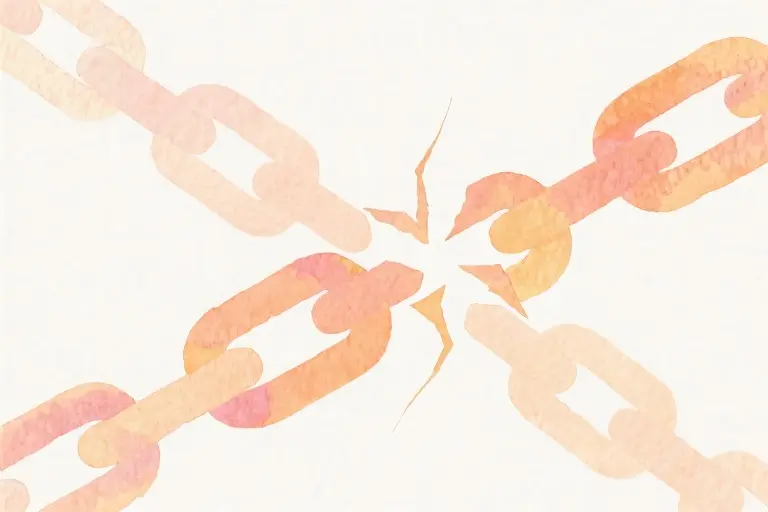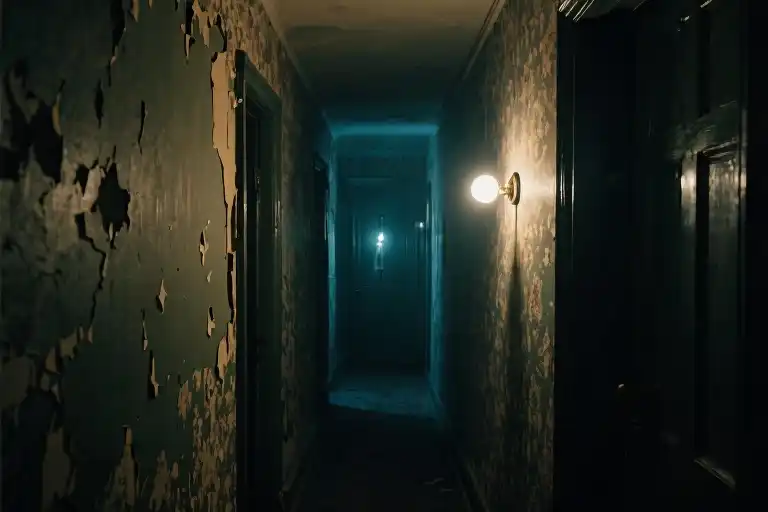Trigger Warning: This discussion contains sensitive material related to childhood trauma and emotional dependence. Some readers may find certain descriptions triggering. Please honor your boundaries – you can pause reading anytime or skip to the Resources section at the end for immediate support.
“People assume I’m independent because I eat alone at my desk,” shares Jamie, a 32-year-old graphic designer. “What they don’t see is the thirty minutes I spent paralyzed this morning, waiting for my roommate to confirm which sweater looked ‘normal enough’.” This paradox lies at the heart of hyper-dependence – a behavioral pattern often mistaken for fear of abandonment, yet fundamentally different in its origins and manifestations.
Unlike separation anxiety, hyper-dependence forms when childhood environments fail to provide two essentials: opportunities to practice autonomy, and safe spaces to make mistakes. Research in developmental psychology shows that children raised in unpredictable or critical households frequently develop what we call learned backwards skills – survival strategies that serve them well in toxic environments but create obstacles in healthy adult relationships.
Three key insights we’ll explore together:
- The Solitude Preference: Why many hyper-dependent individuals actually crave alone time
- The Skill Gap: How unnoticed childhood deprivations (like never being allowed to choose your own clothes) manifest as adult decision paralysis
- The Safety Paradox: The hidden logic behind “I’d rather not try than risk getting it wrong”
Notice how your body reacts as you read these descriptions. That flutter in your stomach or tightness in your chest? Those physical signals often carry more truth than our analyzing minds when it comes to recognizing hyper-dependence patterns. Let’s begin unpacking this with compassionate curiosity.
Recent neurobiological studies reveal an intriguing finding: adults with hyper-dependent tendencies frequently show heightened activity in the amygdala (the brain’s threat detector) when faced with routine choices like selecting lunch options. This isn’t indecisiveness – it’s what happens when the brain learns early that independent actions might trigger punishment or ridicule.
Consider these everyday scenarios that distinguish hyper-dependence from simple neediness:
- Social Withdrawal vs Social Anxiety: Canceling plans because you’re exhausted from second-guessing every interaction (not because you fear social judgment)
- Information Hoarding: Saving dozens of “how to adult” tutorials but being unable to implement them without external validation
- Preemptive Apologizing: Saying “sorry” before asking basic questions, anticipating that needing help makes you burdensome
What makes hyper-dependence particularly insidious is its camouflage. “I perfected looking competent while feeling completely lost,” admits clinical psychologist Dr. Elena Reyes, who specializes in attachment trauma. “My clients include CEOs who can’t decide what to eat without texting friends, and artists who abandon projects unless someone approves each brushstroke.”
This isn’t about willpower or personality flaws. When caregivers consistently override a child’s emerging autonomy (whether through harsh criticism or “helpful” over-involvement), the brain literally wires itself to treat independent decision-making as dangerous. The good news? Neuroplasticity means we can rewire those patterns at any age – and it starts with understanding exactly what wires got crossed in the first place.
When Dependency Isn’t What You Think It Is
We often mistake hyper-dependence for a fear of loneliness or abandonment. The truth is far more complex – and surprisingly paradoxical. Many hyper-dependent individuals actually prefer solitude, not because they enjoy being alone, but because it’s the only space where they don’t feel the crushing weight of others’ expectations.
The 5 Most Misdiagnosed Scenarios of Dependency
- The Over-Consultant: Constantly asking colleagues to review emails before sending, not from lack of knowledge, but from deep-seated fear of making ‘wrong’ choices.
- The Relationship Archivist: Saving every text message and memorizing conversations, not out of affection, but as evidence to validate their interpretations of events.
- The Menu Paralysis: That moment when someone asks ‘where should we eat?’ and your mind goes blank – not from indifference, but from years of having preferences dismissed.
- The Chameleon Worker: Adapting completely to a manager’s style, not as career strategy, but because forming independent work methods feels dangerously unfamiliar.
- The Solo Traveler Who Never Goes: Planning elaborate trips alone, then canceling last minute – the fantasy of independence clashing with the reality of unpreparedness.
Clinical Definitions vs Real-World Dependency
While diagnostic manuals focus on pathological dependence, real-life hyper-dependence exists on a spectrum. It’s not about needing people, but about:
- Unconscious delegation of basic life decisions
- Emotional outsourcing where you rely on others to interpret your feelings
- Cognitive scaffolding – using other people’s brains as your missing executive function
What makes this particularly confusing is that hyper-dependent individuals often appear highly competent in specific areas while struggling with seemingly simple tasks. This isn’t inconsistency – it’s the natural result of uneven childhood training where certain skills were emphasized while others were completely neglected.
The Solitude Paradox Explained
Here’s the counterintuitive truth: Many hyper-dependent people crave alone time because:
- No witnesses mean no potential criticism of their ‘not knowing’
- Suspended expectations provide relief from the exhausting performance of competence
- Reduced decisions – alone, they can eat the same meal three times a day without explaining
This creates a cruel irony – the more they need help developing autonomy, the more they withdraw from situations where support might be available. It’s not isolation they seek, but a pause from the shame of dependence.
“The tragedy isn’t wanting to be alone – it’s needing to be alone because being with others reminds you of everything you weren’t taught.”
This withdrawal often gets misinterpreted as introversion or even independence, masking the real struggle. Next time you see someone who seems perfectly content alone, consider whether it’s preference or protection – the difference changes everything.
The Brain Science Behind the Behavior
Neuroimaging studies show that adults with childhood neglect often have:
- Overactive amygdala: Constantly scanning for potential mistakes or disapproval
- Underdeveloped prefrontal cortex: Less neural infrastructure for independent decision-making
- Disrupted reward system: More relief at avoiding criticism than pleasure from autonomous actions
This isn’t permanent damage – it’s adaptation. The brain learned to prioritize survival over self-sufficiency, creating the perfect biological setup for hyper-dependence. Understanding this can help reframe what feels like personal failure into what it really is: an incredibly effective (if now outdated) survival strategy.
The Three Keys Your Childhood Didn’t Give You
We often carry invisible gaps from childhood – missing skills we never realized we were supposed to learn. For those experiencing hyper-dependence, these gaps manifest as three fundamental missing keys that lock away true autonomy. Understanding these isn’t about blaming caregivers, but mapping the terrain so we can finally fill in the blanks.
The Decision Key: When Choices Were Never Yours to Make
Many hyper-dependent adults share a peculiar childhood pattern: well-meaning parents who constantly made decisions for them. “Wear the red shirt today,” “Take piano not art,” “You’ll major in business.” These micro-decisions accumulate into neural pathways where the prefrontal cortex – our executive decision-maker – never fully develops its choice-making muscles.
Neuroimaging studies show adults with childhood decision deprivation often exhibit:
- Overactive amygdala: Heightened fear response when facing choices
- Underdeveloped ventral striatum: Reduced reward anticipation from self-directed actions
- Thinner prefrontal cortex: Less neural infrastructure for weighing options
“But they just wanted what’s best for me” you might think. Absolutely true. Yet good intentions can’t rewrite biology – when children aren’t allowed to experience small decisions (which shirt? which snack?), their brains don’t build the circuitry for bigger ones later. This explains why ordering from a menu or picking a Netflix show can trigger disproportionate anxiety.
The Execution Key: How Punishment Freezes Initiative
The second missing key relates to action itself. Many hyper-dependent adults grew up in environments where mistakes weren’t tolerated – burnt toast meant screaming, a B-grade brought shame, forgotten chores resulted in days of silence. Over time, the brain learns a brutal equation: action = potential punishment.
This creates what psychologists call learned behavioral freezing, where:
- The body remembers the physiological terror of past punishments
- The hippocampus tags similar future actions as “dangerous”
- The basal ganglia (responsible for habit formation) prioritizes inaction
You’ll recognize this pattern if you:
- Re-read emails 10 times before sending
- Panic when appliances beep (assuming you broke them)
- Secretly hope someone else will start tasks so you can just follow
Ironically, this often looks like laziness to outsiders. It’s actually your brilliant survival brain protecting you – just in a way that no longer serves your adult life.
The Correction Key: Reforging What Was Never Molded
Here’s the hopeful secret: adult neuroplasticity means we can still forge these missing keys. Unlike childhood where skills develop sequentially, adults can use their mature cognition to accelerate learning. Think of it like downloading an update rather than installing original software.
Three rebuilding strategies:
- Micro-decisions with scaffolding:
- Start with inconsequential choices (“Tea or water?”)
- Set a 2-minute timer to force a selection
- Gradually increase decision stakes weekly
- Error cost recalibration:
- List 5 recent “mistakes” and their actual consequences
- Compare to childhood punishments (spoiler: they won’t match)
- Keep a “harmless errors” log to retrain your threat detection
- Behavioral thawing exercises:
- Deliberately do small tasks “wrong” (underfill the dishwasher)
- Notice others’ reactions are usually indifference, not rage
- Celebrate imperfect actions as neural rewiring victories
These keys won’t materialize overnight. But each time you tolerate the discomfort of choosing, acting, or correcting, you’re literally growing new neural pathways. That childhood classroom where these skills weren’t taught? You’re the teacher now.
Understanding Your Dependency Spectrum
Recognizing where you fall on the dependency spectrum is the first step toward reclaiming your autonomy. This isn’t about labeling yourself—it’s about gaining clarity. Many adults who grew up in unpredictable environments developed hyper-dependence as a survival strategy, not realizing these patterns persist long after the danger has passed.
Workplace Dependency Checklist
Let’s start with professional settings, where dependency behaviors often surface through:
- Decision Paralysis: Needing manager approval for minor choices others make independently
- Over-Clarification: Asking coworkers to re-explain simple tasks multiple times
- Meeting Silence: Withholding opinions until hearing others’ views first
- Responsibility Avoidance: Volunteering for support roles to evade leadership positions
“When I first tracked my behavior,” shares Michael, 34, “I realized I asked for permission 12 times in one workday—things like adjusting my chair height or taking a coffee break.”
Score yourself (0=never, 5=always):
| Behavior | Frequency |
|---|---|
| Seek validation before sending routine emails | _ |
| Re-do completed work after mild feedback | _ |
| Experience physical anxiety when deciding lunch | _ |
Relationship Dependency Thermometer
Healthy interdependence becomes hyper-dependence when:
- Safety Behaviors: Canceling plans if your partner can’t attend
- Proxy Living: Adopting others’ hobbies/interests without developing your own
- Emotional Echoing: Mirroring friends’ opinions to avoid disagreement
Key distinction: Needing someone vs. needing to need someone. The latter often stems from childhood environments where having needs was unsafe.
Interpreting Your Results
Green Zone (0-15): Situational dependence—you maintain core autonomy but may seek support during stress
Action: Notice which contexts trigger dependency—is it authority figures? New situations?
Yellow Zone (16-30): Patterned dependence—certain areas consistently feel “unsafe” to navigate alone
Action: Start small—try one daily micro-decision without consultation (e.g., choosing a podcast episode)
Red Zone (31+): Systemic dependence—childhood survival strategies now hinder daily functioning
Action: Combine gradual exposure (doing one “scary” thing weekly) with professional support to rebuild neural pathways of self-trust
Remember: These scores reflect learned behaviors, not personal worth. The child who needed these strategies was brilliant; the adult recognizing they’re no longer serving you is courageous.
The Hidden Advantage
Those with hyper-dependence often possess undervalued strengths:
- Situational Awareness: Noticing subtle social cues others miss
- Collaborative Instincts: Natural team players who consider multiple perspectives
- Adaptive Learning: Quickly adopting new systems when properly guided
Your challenge isn’t eliminating dependence, but restoring choice—the ability to depend when you want, not because you have to.
The Quiet Revolution: Small Rebellions That Rebuild Autonomy
Rebuilding self-sufficiency when you’ve learned hyper-dependence isn’t about grand gestures—it’s a series of tiny revolutions against old survival patterns. Like training muscles that have atrophied, we start with light weights before attempting heavy lifts. This journey unfolds in three deliberate phases, each preparing you for the next level of independence.
Phase 1: Reality-Check Journaling – Collecting Evidence Against Fear
Begin by dismantling the magnified perception of consequences that keeps you dependent. When we grow up in environments where mistakes led to severe reactions (whether emotional withdrawal or outbursts), our brains overestimate the risks of independent action.
Try this exercise for one week:
- Create two columns in a notebook:
- Left side: “What I feared would happen” (e.g., “If I choose the restaurant, my friend will hate the food and blame me”)
- Right side: “What actually happened”
- Intentionally make 3-5 small autonomous decisions daily (ordering coffee without asking preferences, picking a show to watch)
- Record both the anticipated and real outcomes
You’ll likely discover a pattern: the imagined catastrophes rarely materialize. One client realized her “worst-case scenario” of choosing wrong groceries had a 92% non-occurrence rate. This documented evidence becomes your antidote to dependency triggers.
Phase 2: The 5-Level Discomfort Ladder – Gradual Exposure Therapy
Once you’ve accumulated enough data to challenge fear’s false narratives, we design structured challenges. Think of these as “independence workouts” where you control the intensity:
Level 1: Physical Space Autonomy
- Spend 15 minutes in a café alone without texting anyone for reassurance
- Walk one unfamiliar block without GPS guidance
Level 2: Opinion Assertion
- State one non-controversial preference without caveats (“I prefer summer over winter”)
- Wear an outfit chosen solely by you one day/week
Level 3: Low-Stakes Decision Making
- Order for yourself at a restaurant before others do
- Select and purchase a $5-$10 item without consultations
Level 4: Boundary Experiments
- Say “Let me think about that” instead of immediate yes to requests
- Decline one invitation per month without offering elaborate excuses
Level 5: Identity-Level Choices
- Take a class or hobby others don’t approve of
- Make one significant life decision (job change, relocation) primarily based on your own judgment
Progress at your own pace—spending 2-4 weeks per level allows your nervous system to adjust. Celebrate completion of each tier with a self-designed reward (that you choose independently, of course).
Phase 3: Curating Your Support Network
Contrary to popular belief, becoming less dependent doesn’t mean going it alone. The healthiest autonomists have carefully selected support systems. But hyper-dependent individuals often have imbalanced relationships—either being overly reliant or avoiding help altogether.
Build your independence-supportive network by identifying:
- The Cheerleaders: Those who celebrate your small acts of autonomy (“You picked the movie? Awesome!”)
- The Reality Checkers: People who gently challenge exaggerated fears (“What’s the realistic worst that could happen?”)
- The Skill Sharers: Willing to teach practical abilities (budgeting, car maintenance) without taking over
- The Boundary Respecters: Accept “no” without guilt-tripping
Initiate a “support audit”:
- List 3 people currently in your life
- Note how they respond when you exercise independence (supportive/neutral/resistant)
- Gradually increase time with those in the first two categories
Remember: Seeking help becomes unhealthy dependency only when it’s your sole or default strategy. The middle path? Asking for assistance after you’ve attempted your own solution—even if imperfect—and being specific about what kind of support you need (“I’d like suggestions, not solutions”).
When Setbacks Happen (And They Will)
Relapses into old patterns don’t erase progress—they’re part of the rewiring process. Keep an “emergency kit” for shaky moments:
- Your reality-check journal (reread entries where fears didn’t materialize)
- Pre-written permission slips (“I’m allowed to change my mind”, “Mistakes grow my brain”)
- A 5-minute grounding audio recording you’ve made for yourself
One powerful reset technique: The “3-Question Check-In” when you feel dependency creeping back:
- What childhood memory does this situation echo?
- What evidence do I have that the past outcome isn’t inevitable now?
- What’s one micro-action I can take to reclaim agency?
Every small rebellion—every time you choose yourself despite discomfort—weakens hyper-dependence’s grip. These aren’t just behavior changes; they’re neural pathway renovations. With each autonomous act, you’re quite literally rebuilding your brain’s capacity for self-trust.
You Don’t Have to Escape Alone
Finding the Right Trauma Therapist
The journey toward overcoming hyper-dependence isn’t meant to be walked alone. Finding a trauma-informed therapist can feel daunting when you’re used to relying on others for decisions. Here’s how to navigate the process with three key questions:
- “How do you help clients rebuild decision-making confidence?”
Look for responses that mention:
- Gradual exposure techniques
- Distinguishing between childhood fears and current realities
- Celebrating micro-achievements (like choosing what to eat without input)
- “What’s your approach to childhood skill gaps in adults?”
Ideal answers include:
- Non-shaming psychoeducation about developmental trauma
- Practical life skills coaching blended with therapy
- Understanding of “reverse learning” patterns
- “How do you handle emotional flashbacks during sessions?”
Warning signs: Vague promises vs. green flags:
- Clear grounding techniques (“We’ll start with 5-4-3-2-1 exercises”)
- Pre-established safety plans
- Normalization without minimization
Books That Meet You Where You Are
Hyper-dependence often creates a catch-22—you want to become more independent but need guidance to start. These book types offer scaffolding without overwhelm:
1. Interactive Workbooks
- The Adulting Workbook by Emily McDowell – Filled with tear-out checklists for tasks others find simple (like scheduling appointments)
- The Decision Deck – 50 cards with prompts to practice low-stakes choices
2. Trauma Narratives with Practical Steps
- What My Bones Know by Stephanie Foo – Shows how childhood neglect manifests in adult struggles, with concrete recovery milestones
- The Body Keeps the Score (Workbook Edition) – Simplified exercises from the classic trauma text
3. “Micro-Independence” Guides
- Tiny Habits for Big Freedom – Starts with achievements like “chose my own toothpaste”
- The Permission Slip – Pre-written approvals for common hyper-dependence dilemmas (“It’s okay if my choice isn’t perfect”)
Emergency Protocols for Emotional Flashbacks
When childhood feelings of helplessness flood your system, try this sequence:
Phase 1: Stabilize (0-5 minutes)
- Physical Grounding: Press palms against a wall while whispering “I’m [your age] in [current location]”
- Visual Cue: Keep a “then vs. now” photo collage (childhood you + recent independent moment)
Phase 2: Reality Check (5-15 minutes)
- Cost-Benefit Worksheet:
| Fear: "I'll make a wrong choice" → Actual worst outcome: [ ]
| Childhood punishment: [ ] → Current consequences: [ ]- Voice Memo: Record yourself describing one adult accomplishment (play during distress)
Phase 3: Reconnection (15+ minutes)
- Support System Menu: Pre-written options like:
- Text [Friend A] for non-judgmental encouragement
- Watch [specific YouTube therapist]’s 3-min grounding video
- Visit [safe public place] to observe competent strangers
Your Next Right Step
Right now, pick one action from this list:
- Bookmark one therapist directory (try PsychologyToday.com’s “developmental trauma” filter)
- Screenshot the book recommendations that resonate most
- Create your emergency plan template in Notes app with the 3-phase structure
Remember: Hyper-dependence developed over years—healing unfolds in moments. What feels small today becomes tomorrow’s foundation.
The Other Side of Hyper-Dependence: Your Hidden Strengths
What if I told you that the very traits making hyper-dependence challenging also contain seeds of remarkable abilities? The sensitivity to others’ needs that had you constantly seeking approval is, in its healthy form, an exceptional capacity for collaboration. That vigilance scanning for potential mistakes? It’s the foundation of meticulous attention to detail.
Your 24-Hour Reclamation Project
Today’s tiny revolution:
- Keep a “My Call” journal entry documenting one small decision made entirely by yourself (“Chose peppermint tea over my usual chamomile”)
- Note:
- Physical sensations during the decision (“Hands trembled holding the menu”)
- Actual outcome vs. feared outcome (“Server nodded normally vs. my fear they’d roll eyes”)
This isn’t about grand gestures—it’s gathering evidence that your autonomy muscle still responds to training. Like physical therapy after injury, we start with movements barely perceptible to others but seismic to your nervous system.
When the Old Scripts Play Too Loud
For moments when childhood tapes overwhelm:
[EMERGENCY RESET PROTOCOL]
1. Name 3 objects you can touch ("Keyboard ridges, denim seams, molar grooves")
2. Whisper: "This is now, that was then" (4x with exhales)
3. Text HAND to 741741 (Crisis Text Line) if neededYour hyper-awareness—once a survival mechanism—can become your most sophisticated self-care radar. The work isn’t erasing your past, but installing new filters for its messages.
Where To From Here
For continued growth:
- Adult Children of Emotionally Immature Parents (Gibson) – Highlights healthy dependency models
- The Body Keeps the Score (van der Kolk) – Trauma-informed skill rebuilding
- Local trauma-sensitive yoga classes (check psychologytoday.com therapist filters)
You weren’t broken by what happened to you—you adapted brilliantly. Now you get to choose which adaptations still serve you. That choice itself is the first fruit of your hard-won autonomy.
Immediate Support:
- National Suicide Prevention Lifeline: 988
- RAINN Sexual Assault Hotline: 800.656.HOPE
- Domestic Violence Hotline: 800.799.SAFE
(Lines available 24/7, confidentiality guaranteed)
Your story isn’t over where your childhood left off. The next chapter waits for your pen.





